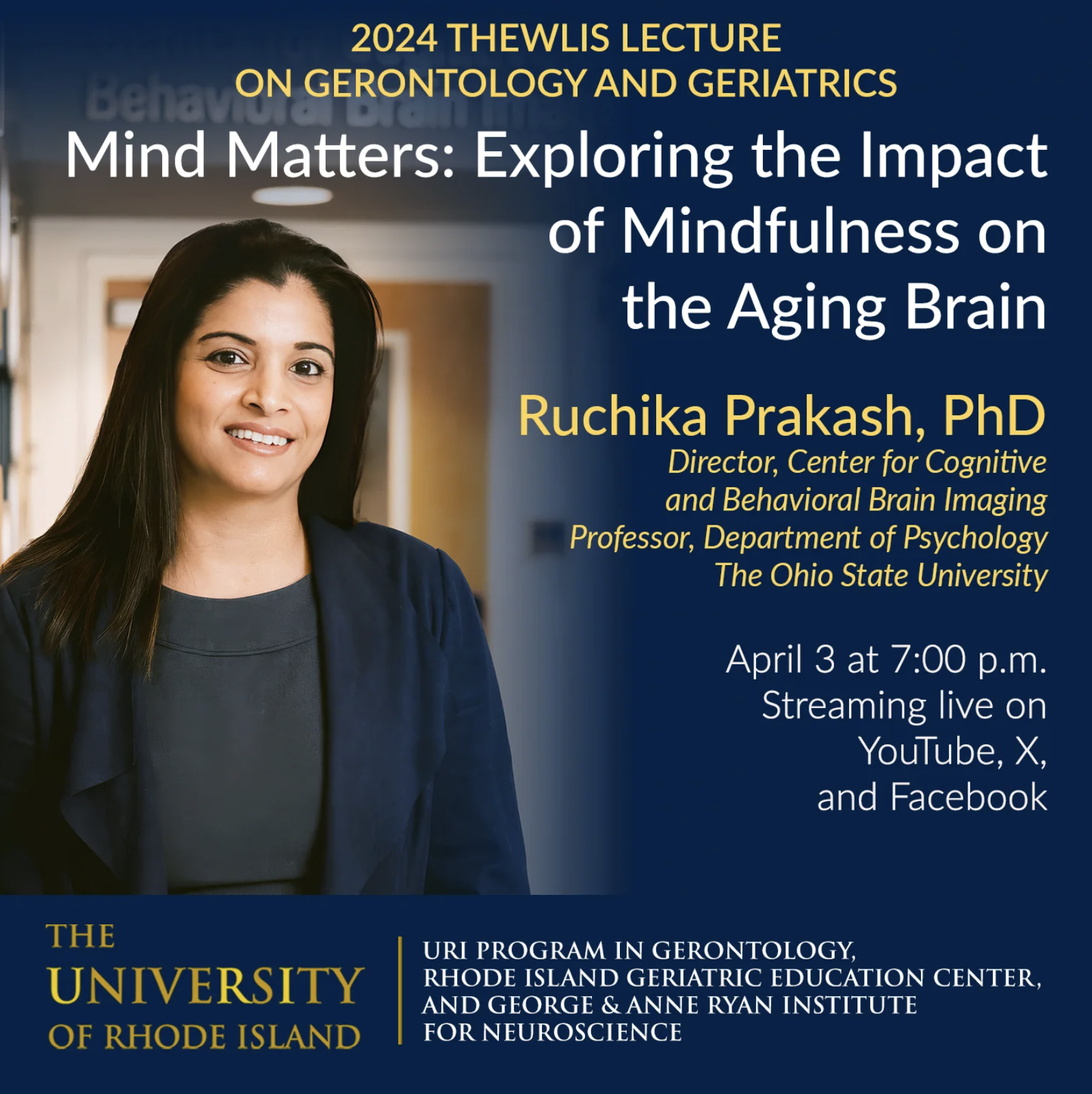Professor Ruchika Prakash spoke about the science behind mindfulness for the 2024 Thewis lecture in a virtual livestream on Wednesday, April 3.
Prakash is a psychology professor at Ohio State University as well as the director of the Ohio State Center for Cognitive and Behavioral Brain Imaging. At the lecture, Prakash discussed the strength the connection between mindfulness and brain health has.
Her recent research regards the impact mind and body interventions have on the emotional and cognitive health of older individuals, Prakash said.
“Attitudinal foundations are really what’s important,” Prakash said. “We call them the soil through which you can cultivate the ability to calm your mind, relax your body and concentrate to see more clearly.”
In graduate school, Prakash began studying mindfulness meditation. The first practice was 10 minutes long and began with a facilitator who rang a bell inviting participants to focus on their breath, Prakash said.
The meditation practice went differently than intended, which sparked realization and inspiration in the field, Prakash said.
“I still remember the first meditation practice I did,” Prakash said. “It was one of the hardest experiences I had.”
This experience allowed for realization over how important mindfulness was for one’s well being and how much potential it carried to reduce mind wandering thoughts, according to Prakash.
Since that first practical back in graduate school, Prakash has continued studying mindfulness, conducting multiple studies.
Prakash’s lab just launched two trials, a health education and lifestyle training study and a cognitive study on emotion regulation training in Multiple Sclerosis. A study in the Journal of Neuroscience regarding age-related changes in functional connectivity was recently published as well.
Through her trials, Prakash utilized mindfulness-based stress reduction. This theory is based on three interventions: randomization, inclusion of an activecontrol group and reduction in demand characteristics, Prakash said.
“Mindfulness in the context of these MBSR programs really is this attention that arises out of intentionally paying attention in an open, kind and discerning way,” Prakash said.
Within the Health Education and Lifestyle Training study, 74 older adults were randomized to participate in either a mindfulness-based attention training program, or an active control group which included stretching and toning exercises.
“The health trial really was designed to study the effects of mindfulness training on mind wandering and attentional control in older adults,” Prakash said.
Attentional control is the ability to select and amplify task relevant information while putting aside other information which is not relevant to that task, Prakash said.
Attentional control was studied in the health trial through the “Go No task,” a 30 minute online response trial including simple but boring tasks to analyze signal detection, reaction time and variability, Prakash said.
The “Go No Task” includes mind wandering probes in the form of prompts, Prakash said.
These prompts appear on the screen with three options which help determine the subject’s state of mind wandering regarding the current task.
The HEALTH study was a pilot study, meaning it was one of the first of its kind. Even despite the plethora of research it produced, the pilot trial fell short of some research aspects, Prakash said. One aspect with unfinished information regarded progress in attentional control.
The mindfulness training part of the HEALTH trial reflected progress in attentional control for people with high baseline working memory capacity, but not for those with lower working memory capacity, Prakash said.
In order to further address lower working memory capacity, Prakash’s lab is conducting an additional study which will last for 12 months.
“The hope is that we will be able to improve attentional control not just in the high working memory groups but in lower working memory groups as well,” Prakash said.
During the talk, Prakash also discussed her study published in the Journal of Neuroscience. The study overviewed how mindfulness impacts functional connectivity related aging by looking at different regions of the brain, Prakash said.
“As we get older, there is decreased responsiveness of different regions of the brain,” Prakash said. “What mindfulness meditation allows us to do and has the potential for us to do is to increase the specialization of these different networks.”
Prakash and her team have been working on developing a neural marker of sustained attention using whole brain functional connectivity in order to better assess current research, she said. In the near future, Prakash aims to also study a dose-response relationship between time and benefit of mindfulness.
To watch the full livestream of Prakash’s talk, visit youtube.com/watch?v=8ND27FnyVig .





